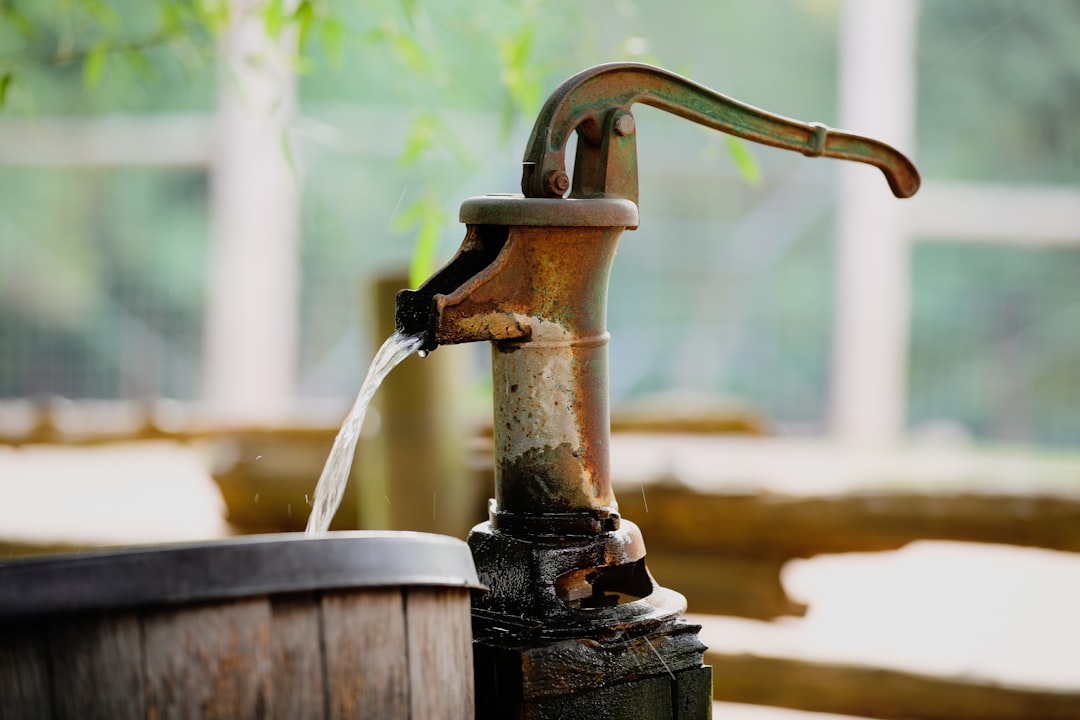 Photo from Unsplash
Photo from UnsplashOriginally Posted On: https://www.completepumpsupplies.co.uk/resources/why-cant-water-be-lifted-above-10-metres
Understanding Water Pump Limitations – The Science Behind the 10-Metre Barrier
Did you ever make a really long straw as a kid? heh, me neither…
But, in case you wanted to know why a really long straw doesn’t work, here’s why:
Water pumps play a crucial role in various industries, from supplying the water to people’s homes, to facilitating complex industrial processes. However, have you ever wondered why there seems to be a limit to how high a pump can lift water – specifically 10.336 metres (or ~33ft )?If you have (or even if you haven’t!) then read on as we explore the science behind this phenomenon, and the factors that restrict a pump’s ability to lift water beyond this limit.The 10.336 Metre Dilemma: Why Does it Occur?
Before we begin, I want to clarify that the title may have been mildly misleading, and the wording I used was very intentional. Water is capable of traveling above a height of 10.3 metres when propelled by positive force. However, it cannot be lifted beyond this 10.3 metre or 33 foot limit by suction or negative force.
The 10.336-metre limit stems from the fundamental principles of physics, particularly atmospheric pressure and the behavior of fluids under pressure.
If you can imagine a column of water that extends vertically to a height of 10.336 metres (just a bit taller than the average two storey house), this column of water is equivalent to the pressure exerted by one atmosphere (atm) – that is to say standard air pressure (around 14.7psi). Even if you were to somehow create a perfect vacuum above the water, it would still be impossible to lift the water any futher than this point using any kind of suction pump.
To put it in more simple terms, the weight of the water column when it reaches 10.336 metres creates a pressure that counteracts the pump’s suction force and makes it useless. This is why modern wells often place the pump at the bottom, pushing water upward using positive pressure instead of relying on suction at the top – in comparison to the old hand pump wells, which try to suck the water up.
The Role of Centrifugal Water Pumps and CavitationCentrifugal water pumps – pumps that use a rotating impeller to create a vacuum – are widely used for pumping water in various domestic, commercial and agricultural settings. However they have their own set of limitations. Attempting to lift water beyond the 10-metre threshold described can lead to a phenomenon known as ‘cavitation’ – however, most modern pumps put a failsafe in place to stop this from happening.
Briefly, cavitation occurs when the pressure drops suddenly, causing the water to vapourise. This results in the formation of vapour pockets referred to as ‘bubbles’ or ‘voids’ within the liquid. When these cavities collapse and implode, the subsequent shockwaves, intense heat, and microjets which are generated can be destructive, jeopardising the structural integrity of the pump and the entire system, and creating a critical safety hazard.
How Does Cavitation Cause Damage?
Cavitation can cause problems for the water pump system in a number of ways. The primary way that cavitation causes damage to water pump systems is through erosive effects. The microjets which are produced act like small, powerful water jets, striking the adjacent surfaces with an incredible force. Over time this will erode and wear away the pump material, leading to the loss of structural integrity.
In addition, the shockwaves which are generated when the bubbles collapse can induce vibrations which over time can lead to fatigue and failure of equipment.
Cavitation can also have chemical effects, particularly in liquids containing dissolved gases. The sudden increase in pressure and temperature can lead to chemical reactions, such as the formation of highly reactive and unstable free radicals which contribute to the degradation and corrosion of materials.
To avoid cavitation, it’s crucial to stay within the pump’s specified limits.
Beyond the 10-Metre Barrier: Discharge and PressurisationWhile there’s a theoretical limit on suction, the discharge end of the pump doesn’t face the same constraints. There are pumps designed to discharge water to heights exceeding 1000 metres. This is achieved by generating the necessary pressure at the discharge end, allowing water to be propelled vertically to significant heights.
To prevent issues like cavitation and ensure smooth operation, pressurisation units play a vital role. Pressurisation units help maintain a constant, stable pressure within the system, which reduces any sudden pressure drops or turbulence that could lead to cavitation and means that water can be pumped safely.
The 10.336-metre limit is a result of standard atmospheric pressure and the practical constraints of suction pumps. Centrifugal water pumps face their own limitations due to physics, and especially cavitation, prompting the need for pressurisation units.
As technology advances, engineers continue to develop cutting-edge solutions to overcome these challenges and push the boundaries of what is achievable in the world of water pumping.
Using Computational Fluid Dynamics (CFD) simulations helps engineers to run virtual testing, allowing them to optimise the equipment specifications to ensure that fluid runs smoothly and the likelihood of cavitation-induced damage is reduced. Remote monitoring of pump systems is also now commonplace with real time alerts allowing for swift resolution should any issues occur.
There have also been substantial innovations in the materials used in water pump systems. Reinforced plastics and composites can be used instead of metal to give better durability, and high-performance ceramics and coatings, designed to withstand abrasion and erosion which can occur during cavitation, are applied to critical pump components to enhance the lifespan of the equipment.
By embracing such cutting edge technologies, the 10-metre limit of traditional water pump systems has already become a challenge of the past – but unfortunately, nothing yet for drinking from a really long straw.
